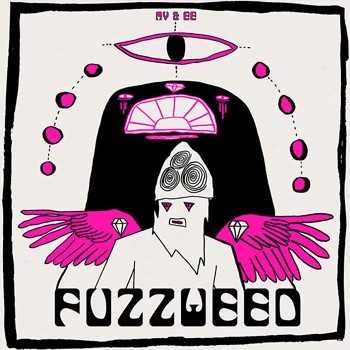 For some twelve years now, the Vermont based hippie collective MV & EE, centered on the duo of Mark Valentine and Erica Elder, have been making a wide mark across the New Weird American landscape. Whether it be their out of space and time folk songs, off-kilter Neil Young and Crazy Horse inspired rockers, their self-described “lunar ragas”, or their live extended ambient explorations, they show no signs of stopping, having released over 30 albums since 2001, rivalling Acid Mothers Temple for prolificacy. Their first album of 2013, Fuzzweed, arrives close on the heels of their last album of 2012, Space Homestead.
For some twelve years now, the Vermont based hippie collective MV & EE, centered on the duo of Mark Valentine and Erica Elder, have been making a wide mark across the New Weird American landscape. Whether it be their out of space and time folk songs, off-kilter Neil Young and Crazy Horse inspired rockers, their self-described “lunar ragas”, or their live extended ambient explorations, they show no signs of stopping, having released over 30 albums since 2001, rivalling Acid Mothers Temple for prolificacy. Their first album of 2013, Fuzzweed, arrives close on the heels of their last album of 2012, Space Homestead.
Fuzzweed builds on the laidback rural psychedelia of Space Homestead, but takes it further out, into the netherlands between the rustic peaks of the Green Mountains that run through the duo’s home state to the edges of something indefinable and not quite of this world. Opening cut, Environs, true to its name, seems to conjure up images of a passing countryside, but one seen through the eyes of someone tripping out on something decidedly hallucinogenic. It’s a little instrumental that’s a lovely, low key way to start the album. The pace doesn’t pick up much for the next song, Turbine (this is a seriously laidback album, folks), but it does inject a weirdly out of place electronic percussion track (similar to their classic song East Mountain High) which only adds to the otherworldliness of the song. It’s like walking from green summer fields into the fairy realms of the British Isles, but cast with a distinctly American mythology. Bridging the gap between the old, weird settings of the American countryside with a modern landscape of rundown, rusty roadside gas stations and trailer parks, Trailer Trash is nonetheless a sweet journey with strumming acoustic guitars, beautiful ghostly vocals, and acidic electric guitar soloing courtesy of Valentine (who’s vocals and guitar style both seem influenced by Neil Young’s). Jacked Up is just as laidback as the rest of the album, but with its random harmonics, like sparkling diamonds on golden ocean waves at sunset, it has a bit more of warm, West Coast vibe underlying it’s sound.
But it’s the 20-minute long Poor Boy Excursions that really define that ‘caught between this world and the next one over’ sound. Comprising pretty much all the aspects of their style, it starts with some dusty, acoustic slide guitar and Erica Elder’s distant, dreamily sung vocals, as the duo runs through a version of the old blues standard Poor Boy Blues. Pure and simple, it’s as rooted in the earth of the American landscape as one can get. There is, however, an ominous organic drone that slowly builds underneath, leading the listener onwards into the next section of the piece titled Long Way From Home, suggesting we are now getting further and further away from the rural countryside where we began. The title comes from Poor Boy, Long Ways From Home, the sometimes alternate title of the opening blues number, but the blues are left behind here as space guitars, strange voices, wandering bass and tumbling percussion begin to weave a vast psychedelic tapestry of sound. Perhaps we’re now sitting atop Mount Mansfield, the highest point in Vermont, caught between the earth and the cosmos, and we’re ingesting some hallucinogenic substance, preparing ourselves for a journey beyond. And that’s exactly where the last part of Poor Boy Excursions, its title of Environments echoing the opening track, takes us. Environments is actually a piece the duo, along with members of their collective, often play live. This is the band in their lunar raga mode, with rambling Indian percussion and sitars balanced out with droning, lyseric guitars and spacey synths. Here, recorded in the studio, Environments takes on a new crispness as every note and microtone comes out. The sonic quality is deep and expansive, and if the listener closes his or her eyes, then, like its title suggests, it envelopes you, surrounding you in a new cosmic environment where anything seems possible.
Fuzzweed is not the kind of psychedelic music to get up and dance to, it’s the kind to sit back and relax to, letting your mind and spirit wander. Burn some incense, but instead of the exotic scents of sandalwood and patchouli, try some distinctively earthy and American ones like sage and cedar, and take the journey.
For more info, visit: http://threelobed.com/tlr/ and http://www.facebook.com/pages/MV-EE/162854533776883
Reviewed by Jeff Fitzgerald

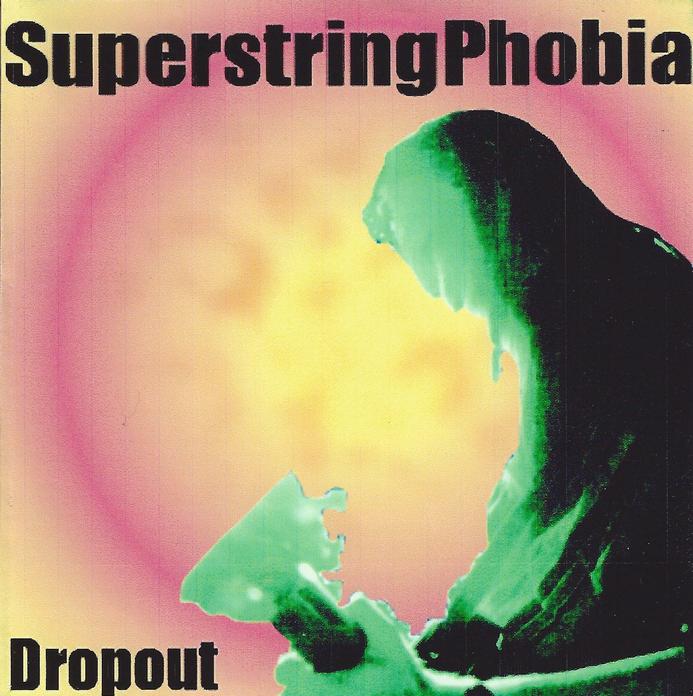 When someone chooses to name their band/solo project after a fear “of wanting to explain all of the particles and fundamental forces of nature in one theory by modelling them as vibrations of tiny supersymmetric strings” (see Wikipedia for further details), you can imagine Dropout being one of those albums that acts as a soundtrack for researching a Masters in Astrophysics. However, fear not; you don’t have to be a rocket scientist to get absorbed by the pulsing beats, hot electronics and razor sharp guitar lines of Superstring Phobia, the brainchild of Leeds-based David Sanderson, who plays and programmes every sound on the album.
When someone chooses to name their band/solo project after a fear “of wanting to explain all of the particles and fundamental forces of nature in one theory by modelling them as vibrations of tiny supersymmetric strings” (see Wikipedia for further details), you can imagine Dropout being one of those albums that acts as a soundtrack for researching a Masters in Astrophysics. However, fear not; you don’t have to be a rocket scientist to get absorbed by the pulsing beats, hot electronics and razor sharp guitar lines of Superstring Phobia, the brainchild of Leeds-based David Sanderson, who plays and programmes every sound on the album.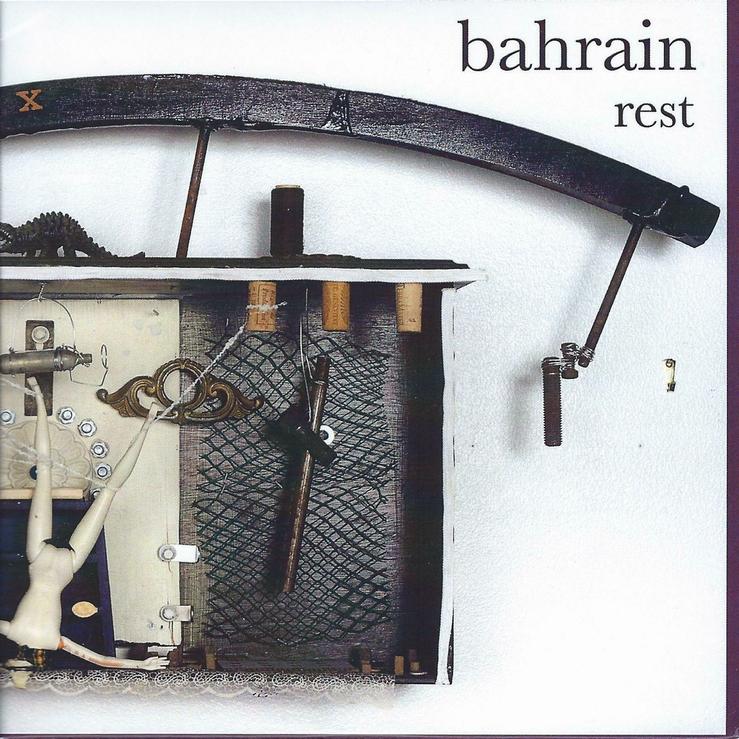 Bahrain are the Austin, Texas based quartet of D. Boone on guitars, Colleen Gugan on bass, keyboards and vocals, Mel on drums, and Scott Telles (ST 37) on bass, keyboards and vocals. The latest from the band is Rest, a 19 track set of live performances, demos, improvs and cover tunes recorded between 2000 and 2005, with some new overdubs, mixing and mastering in 2010. The group actually disbanded in 2005 but reunited for one show in 2012 to promote the release of this CD.
Bahrain are the Austin, Texas based quartet of D. Boone on guitars, Colleen Gugan on bass, keyboards and vocals, Mel on drums, and Scott Telles (ST 37) on bass, keyboards and vocals. The latest from the band is Rest, a 19 track set of live performances, demos, improvs and cover tunes recorded between 2000 and 2005, with some new overdubs, mixing and mastering in 2010. The group actually disbanded in 2005 but reunited for one show in 2012 to promote the release of this CD.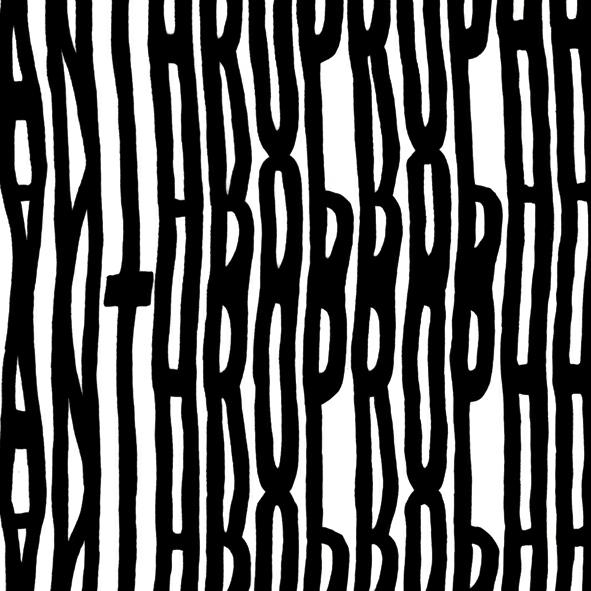 Anthroprophh is the solo project, and this is the first solo album, by The Heads guitarist and vocalist (and audio generator operator) Paul Allen. The Heads are a UK band formed in the early 90’s. Initially inspired by emerging stoner rock bands of the time like Monster Magnet, albeit with a heavier dose of noise thrown in, on later albums like 33 (2004) and Dead in the Water (2005) they began to explore longer form, more experimental rock. For his debut album (released on vinyl and as a download), Allen has taken inspiration from his own band’s later albums, but tempered it with the rhythms of Krautrock for some truly inspired, mostly instrumental psychedelic rock. Opening cut, Hermit, is a churning, LSD soaked electric voyage, from its sea of wah wah’d distortion opening, through its stormy, acidic guitar work and pounding Can-inspired rhythms to its swirling, hallucinogenic coda. These tracks aren’t as long as some of 20-minute monsters found on the above mentioned Heads LP’s, the shortest one being the solo electro-acoustic Discretion Shot (clocking in at 1:09), but their sound is focused, each piece developing its own distinct sonic snapshot, whether it be the tribal intensity of Precession, the droning space journey of Ende or the mind-altering, bad trip British garage rock meets alien landscape of We. Allen does break into longer form exploration with one track on the album though, the 16 1/2 minute Entropy. This one is a sonic buffet for kosmiche loving ears, all intense, part machine, part human rhythmic minimalism married to guitar atmospherics and bubbling, cosmic electronic noises. Allen shows supreme control over his guitar here, slowly developing the ambience, weaving it in and out of the driving tempo of the percussion. The piece ever so slowly builds in intensity over its course, as Allen subtly introduces more and more sounds, finally cutting lose on his guitar for some hypnotic, spiralling soloing only when the tension can’t take it anymore. Mesmerizingly brilliant!
Anthroprophh is the solo project, and this is the first solo album, by The Heads guitarist and vocalist (and audio generator operator) Paul Allen. The Heads are a UK band formed in the early 90’s. Initially inspired by emerging stoner rock bands of the time like Monster Magnet, albeit with a heavier dose of noise thrown in, on later albums like 33 (2004) and Dead in the Water (2005) they began to explore longer form, more experimental rock. For his debut album (released on vinyl and as a download), Allen has taken inspiration from his own band’s later albums, but tempered it with the rhythms of Krautrock for some truly inspired, mostly instrumental psychedelic rock. Opening cut, Hermit, is a churning, LSD soaked electric voyage, from its sea of wah wah’d distortion opening, through its stormy, acidic guitar work and pounding Can-inspired rhythms to its swirling, hallucinogenic coda. These tracks aren’t as long as some of 20-minute monsters found on the above mentioned Heads LP’s, the shortest one being the solo electro-acoustic Discretion Shot (clocking in at 1:09), but their sound is focused, each piece developing its own distinct sonic snapshot, whether it be the tribal intensity of Precession, the droning space journey of Ende or the mind-altering, bad trip British garage rock meets alien landscape of We. Allen does break into longer form exploration with one track on the album though, the 16 1/2 minute Entropy. This one is a sonic buffet for kosmiche loving ears, all intense, part machine, part human rhythmic minimalism married to guitar atmospherics and bubbling, cosmic electronic noises. Allen shows supreme control over his guitar here, slowly developing the ambience, weaving it in and out of the driving tempo of the percussion. The piece ever so slowly builds in intensity over its course, as Allen subtly introduces more and more sounds, finally cutting lose on his guitar for some hypnotic, spiralling soloing only when the tension can’t take it anymore. Mesmerizingly brilliant!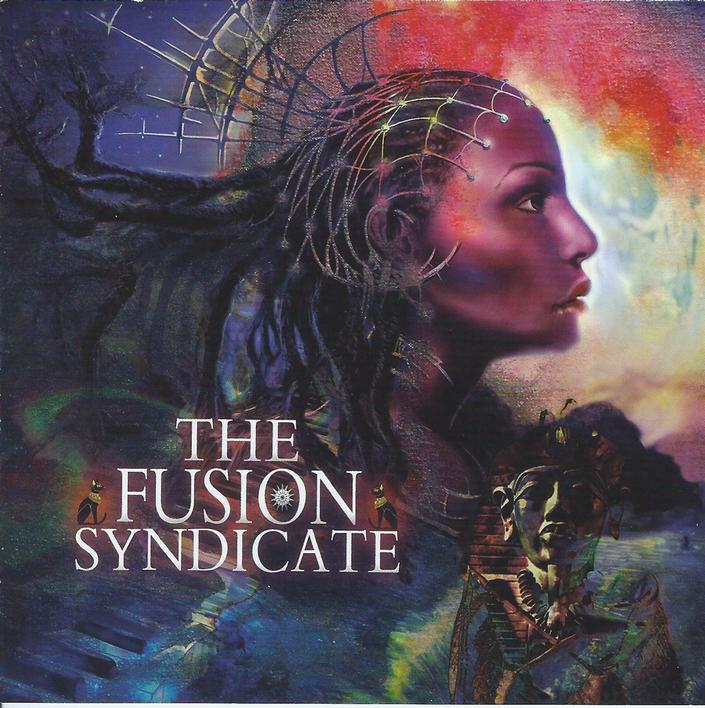 Multi-instrumentalist and producer Billy Sherwood must have a pretty impressive Christmas card list, if the guest stars on this album are anything to go by. Earlier in the year, he pulled together a dream lineup of talent from the likes of Yes, King Crimson and Gong for a project called The Prog Collective. Just a few months later, the cast list is even more staggering on The Fusion Syndicate, the second of a one-two riff on beloved (or derided, depending on which side of the fence you are on) musical genres from the early ’70’s. Name any significant fusion or progressive band or artist from that era, and the chances are that someone associated with them will be on this album. From Yes, Mahavishnu Orchestra, King Crimson, Genesis, Hawkwind, Gong, Weather Report, Soft Machine and Brand X, to sidemen for Frank Zappa, Chick Corea, John McLaughlin and Allan Holdsworth (not to mention … ahem … Billy Idol), all the boxes are well and truly ticked. Each guest appears on one track only with Sherwood acting as the glue that binds it all together, conceptualizing, writing, producing and playing all the instruments (keyboards, guitars, drums) not handled by the guest list on any particular track.
Multi-instrumentalist and producer Billy Sherwood must have a pretty impressive Christmas card list, if the guest stars on this album are anything to go by. Earlier in the year, he pulled together a dream lineup of talent from the likes of Yes, King Crimson and Gong for a project called The Prog Collective. Just a few months later, the cast list is even more staggering on The Fusion Syndicate, the second of a one-two riff on beloved (or derided, depending on which side of the fence you are on) musical genres from the early ’70’s. Name any significant fusion or progressive band or artist from that era, and the chances are that someone associated with them will be on this album. From Yes, Mahavishnu Orchestra, King Crimson, Genesis, Hawkwind, Gong, Weather Report, Soft Machine and Brand X, to sidemen for Frank Zappa, Chick Corea, John McLaughlin and Allan Holdsworth (not to mention … ahem … Billy Idol), all the boxes are well and truly ticked. Each guest appears on one track only with Sherwood acting as the glue that binds it all together, conceptualizing, writing, producing and playing all the instruments (keyboards, guitars, drums) not handled by the guest list on any particular track. A bit of background information is called for prior to reviewing this album. Purple Pyramid is the prgressive/psychedelic division of Cleopatra Records, the far-out label that brought us some stunning spacerock back in the 1990’s, including re-igniting the careers of ex-Hawkwinders Nik Turner and Simon House, while also releasing a range of covers albums (Pink Floyd, King Crimson, Brian Eno, Hawkwind) of variable quality. Billy Sherwood, multi-instrumentalist producer and associate of the 1990’s Yes, also has a long history of organizing tribute albums – XYZ – A Tribute To Rush, Return To The Dark Side Of The Moon, Dragon Attack – A Tribute To Queen – using a stellar cast of musicians from such bands as Yes, Deep Purple, Hawkwind, Gong and King Crimson. Nektar, on the other hand, just have a long history full-stop (going back to their first release Journey To The Centre Of The Eye in 1971), plus a revolving door of musicians, none of whom can claim the distinction of having played on every single Nektar album. The combining factors of updating progressive rock glories, cover versions and high profile guest stars are key to the release of A Spoonful Of Time. Although released under the Nektar brand name, and featuring long time band members Roye Albrighton (vocals and guitar) and Ron Howden (drums) – the contributions of current the Nektar keyboard player being hard to gauge behind a host of keyboard-toting guest artists – the very existence of A Spoonful Of Time owes as much to Sherwood (who mixed the album and plays on almost all the tracks) and Cleopatra as it does to Nektar. The appearance of a covers collection this late in a band’s career hints at burned out creativity, but at least provides some new music beyond yet another live album or collection of material from their own archives (to be fair, Nektar have got a brand new studio album – Time Machine – in the works for 2013, which would fly in the face of burnout accusations).
A bit of background information is called for prior to reviewing this album. Purple Pyramid is the prgressive/psychedelic division of Cleopatra Records, the far-out label that brought us some stunning spacerock back in the 1990’s, including re-igniting the careers of ex-Hawkwinders Nik Turner and Simon House, while also releasing a range of covers albums (Pink Floyd, King Crimson, Brian Eno, Hawkwind) of variable quality. Billy Sherwood, multi-instrumentalist producer and associate of the 1990’s Yes, also has a long history of organizing tribute albums – XYZ – A Tribute To Rush, Return To The Dark Side Of The Moon, Dragon Attack – A Tribute To Queen – using a stellar cast of musicians from such bands as Yes, Deep Purple, Hawkwind, Gong and King Crimson. Nektar, on the other hand, just have a long history full-stop (going back to their first release Journey To The Centre Of The Eye in 1971), plus a revolving door of musicians, none of whom can claim the distinction of having played on every single Nektar album. The combining factors of updating progressive rock glories, cover versions and high profile guest stars are key to the release of A Spoonful Of Time. Although released under the Nektar brand name, and featuring long time band members Roye Albrighton (vocals and guitar) and Ron Howden (drums) – the contributions of current the Nektar keyboard player being hard to gauge behind a host of keyboard-toting guest artists – the very existence of A Spoonful Of Time owes as much to Sherwood (who mixed the album and plays on almost all the tracks) and Cleopatra as it does to Nektar. The appearance of a covers collection this late in a band’s career hints at burned out creativity, but at least provides some new music beyond yet another live album or collection of material from their own archives (to be fair, Nektar have got a brand new studio album – Time Machine – in the works for 2013, which would fly in the face of burnout accusations). [Ed. note – This review is being posted after the reivew of the most recent Re-Stoned album Plasma.
[Ed. note – This review is being posted after the reivew of the most recent Re-Stoned album Plasma. 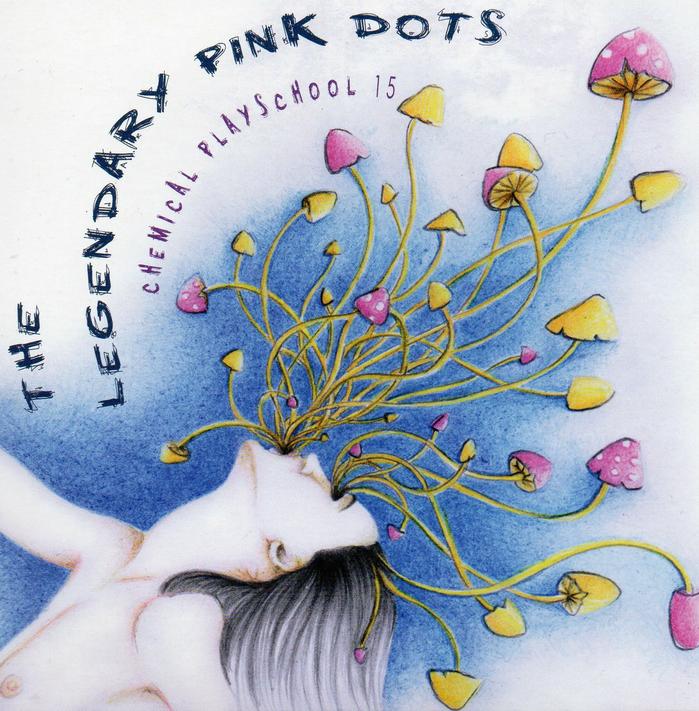 The Legendary Pink Dots are an esoteric underground communal Beatnik collective phenomena and a band I avidly collect and listen to often for the past 15 years, ever since discovering them at a gig in Oslo, a review which can be found in the old index on the old Aural Innovations page, spring 1998 issue. Please
The Legendary Pink Dots are an esoteric underground communal Beatnik collective phenomena and a band I avidly collect and listen to often for the past 15 years, ever since discovering them at a gig in Oslo, a review which can be found in the old index on the old Aural Innovations page, spring 1998 issue. Please 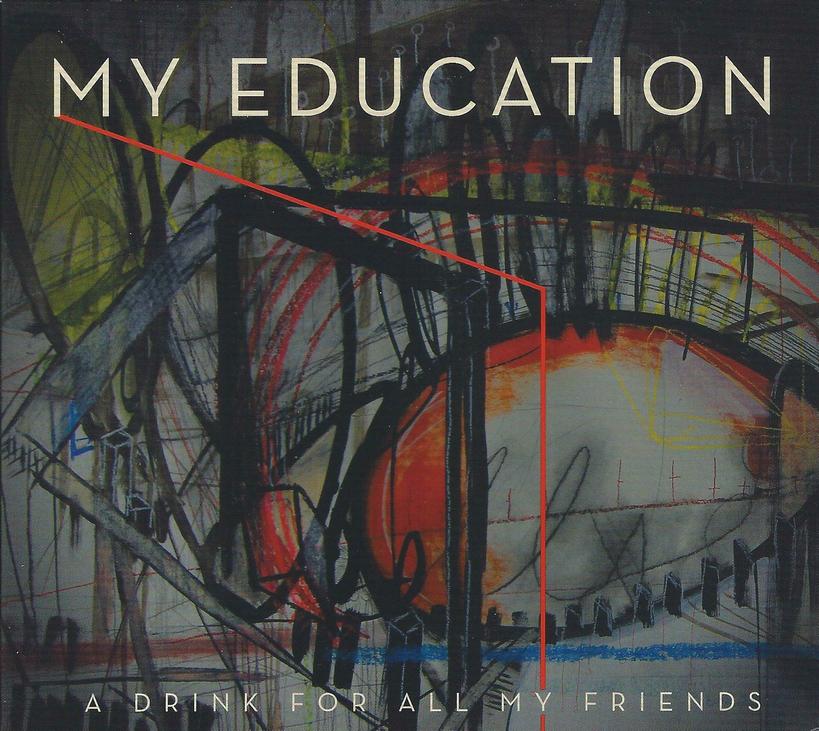 The latest from Austin, Texas based My Education is a set of psychedelically dreamy and cinematic powerhouse wall-of-sound compositions that are all about folk-like serenity and image inducing intensity. The band are the sextet of James Alexander on viola, guitar and programming, Chris Hackstie on acoustic, electric and pedal steel guitars, Brian Purington on guitar Vincent Duncan on drums and percussion, Scott Telles (ST 37) on bass, and Henna Chou on piano, keyboards and cello, plus guests on vibraphone, saxophone and keyboards.
The latest from Austin, Texas based My Education is a set of psychedelically dreamy and cinematic powerhouse wall-of-sound compositions that are all about folk-like serenity and image inducing intensity. The band are the sextet of James Alexander on viola, guitar and programming, Chris Hackstie on acoustic, electric and pedal steel guitars, Brian Purington on guitar Vincent Duncan on drums and percussion, Scott Telles (ST 37) on bass, and Henna Chou on piano, keyboards and cello, plus guests on vibraphone, saxophone and keyboards. This Finnish trio start off the first of four tracks on this CD somewhat slow and droney and meditatively heavy and instrumental in a My Sleeping Karma fashion, but that is only the opener. The accented vocals sound like Dark Sun’s very similar singer as well. Maybe it’s just being Norwegian, Finland is like an strange language with its nasal accentuation and is distant to Scandinavian. If the singer had been female, it may as well have been a spacey Amon Düül II section from the Wolf City album as well. The track in question is called Beneath A Black Star. It seems from the get go this band is related to the weird kraut-goes-Doom stylings with heapings of drone one hears bubbling up with bands like Astra, with the psychedelicized kraut-goes-Sabbath influence. Deserted Planet 2078 is the next track and is a departure being less heavy, with keyboards reminding me of the first Orange Goblin album’s Star Shaped Cloud, but it does not build to a mind-blowing keyboard and lyrical climax like that song does. Its just kind of low key like Astra often do, and the vocals are present. Spacy Phantasy is next and has a vintage slowed down Fly To The Rainbow feel (Scorpions on Brain label!) but soon doomingly meanders into the Rise Above label bands like Astra or early Orange Goblin again, with heavy guitars and keyboard bits. The song gets progressive after 2 1/2 minutes, with more complex and uptempo changes with spacey vocals. Sykli is the last track, of this short album clocking in under 40 minutes, and is sung in Finnish language. It is slow at first and picks up after 8 minutes to a rockier groove.
This Finnish trio start off the first of four tracks on this CD somewhat slow and droney and meditatively heavy and instrumental in a My Sleeping Karma fashion, but that is only the opener. The accented vocals sound like Dark Sun’s very similar singer as well. Maybe it’s just being Norwegian, Finland is like an strange language with its nasal accentuation and is distant to Scandinavian. If the singer had been female, it may as well have been a spacey Amon Düül II section from the Wolf City album as well. The track in question is called Beneath A Black Star. It seems from the get go this band is related to the weird kraut-goes-Doom stylings with heapings of drone one hears bubbling up with bands like Astra, with the psychedelicized kraut-goes-Sabbath influence. Deserted Planet 2078 is the next track and is a departure being less heavy, with keyboards reminding me of the first Orange Goblin album’s Star Shaped Cloud, but it does not build to a mind-blowing keyboard and lyrical climax like that song does. Its just kind of low key like Astra often do, and the vocals are present. Spacy Phantasy is next and has a vintage slowed down Fly To The Rainbow feel (Scorpions on Brain label!) but soon doomingly meanders into the Rise Above label bands like Astra or early Orange Goblin again, with heavy guitars and keyboard bits. The song gets progressive after 2 1/2 minutes, with more complex and uptempo changes with spacey vocals. Sykli is the last track, of this short album clocking in under 40 minutes, and is sung in Finnish language. It is slow at first and picks up after 8 minutes to a rockier groove.